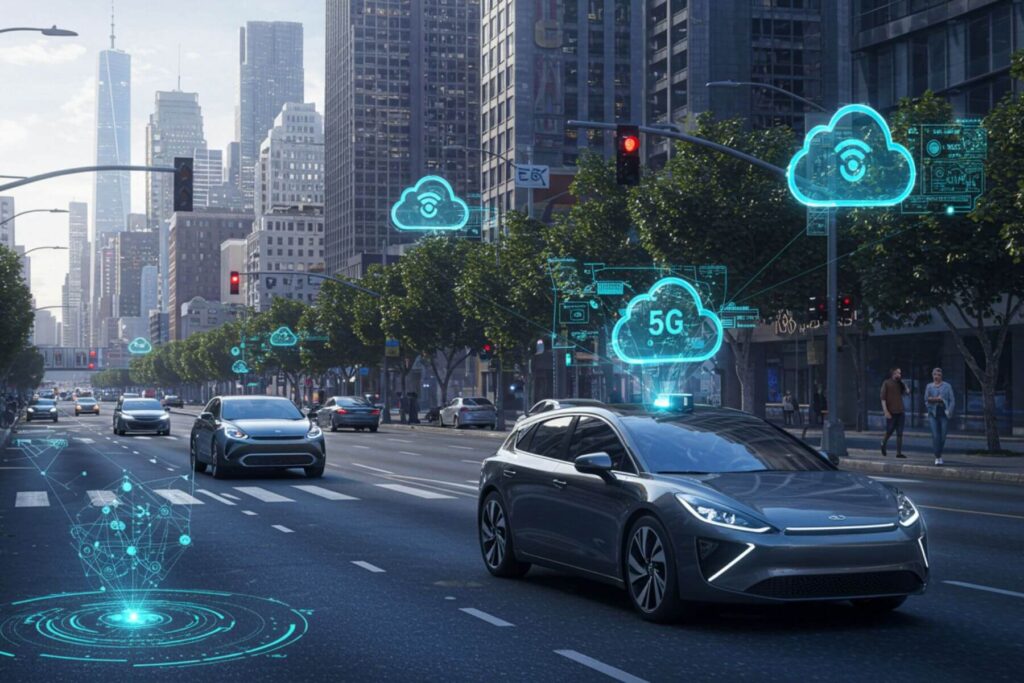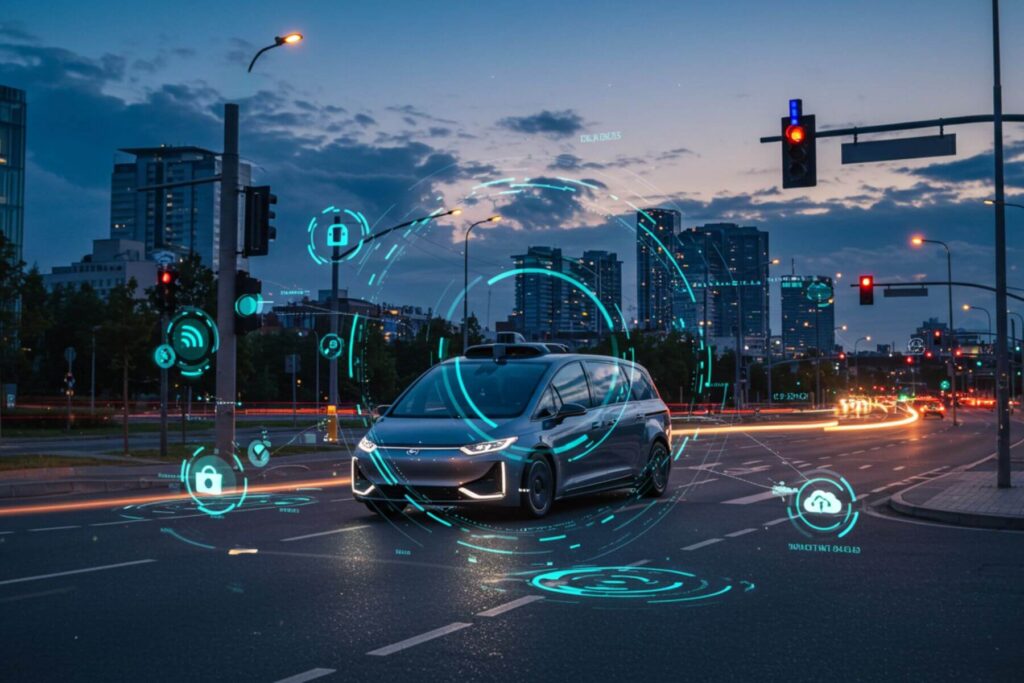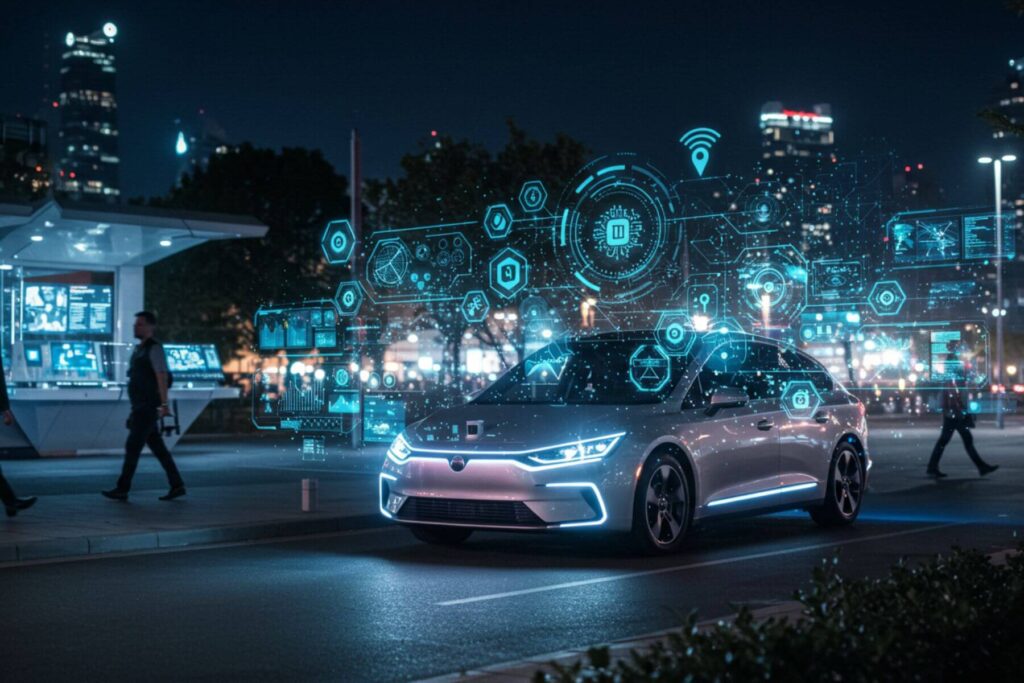In 2025, robotaxis have become more common on city streets, offering self-driving transportation that feels safe, smooth, and efficient. But behind each ride is a powerful network of real-time data systems that work together like a digital nervous system. These systems constantly collect, process, and share information to make sure every robotaxi reacts quickly, avoids danger, and stays on schedule. This article explores 10 important real-time data systems that keep robotaxis running smoothly today.
1. High-definition map updating systems
Robotaxis rely on HD maps to understand road layouts, traffic signals, lane markings, and even curb locations. But roads change often due to construction, accidents, or weather. That’s why robotaxis need real-time map updating systems. These systems use a mix of camera input, GPS data, and cloud-based mapping services to detect changes and update the car’s digital map almost instantly. This allows the robotaxi to adjust routes or driving behavior as needed without human help.
2. Sensor fusion engines
A robotaxi has multiple sensors like LIDAR, radar, cameras, and ultrasonic detectors. Each of these captures a different type of data. The sensor fusion engine combines all of this information in real time, creating a complete and accurate view of the world around the vehicle. This includes recognizing pedestrians, other cars, traffic signs, and obstacles. By blending data from various sources, the robotaxi can make safer decisions in complex situations, such as merging into traffic or navigating busy intersections.
3. Edge computing units
Edge computing is a system that processes data close to the source, in this case, inside the vehicle itself. Robotaxis can’t rely on cloud data alone because even small delays can be dangerous. Edge computing units analyze incoming sensor data in milliseconds, helping the vehicle decide when to brake, accelerate, or turn. These units allow for split-second decisions without the need for internet connection, which is especially helpful in tunnels or remote areas where connectivity might drop.
4. Real-time traffic management systems
Robotaxis need to know about traffic jams, road closures, and delays, not just from their own sensors, but from a wider traffic network. Real-time traffic management systems connect robotaxis to city infrastructure and other vehicles to share live updates. These systems alert the robotaxi to traffic incidents ahead and recommend alternative routes. They also help reduce congestion by balancing the flow of robotaxis and adjusting navigation strategies based on real-time road conditions.
5. Predictive maintenance data platforms
Keeping a robotaxi on the road isn’t just about navigation; it’s also about the vehicle’s health. Predictive maintenance systems constantly monitor data from the car’s brakes, battery, tires, sensors, and other parts. If something starts to wear out or fails, the system detects it in real time and schedules maintenance before it causes a problem. This avoids breakdowns and ensures that robotaxis are always ready for the next ride without delay or safety issues.
6. Cloud-based fleet coordination systems
Robotaxi companies often operate hundreds or even thousands of vehicles. To manage them all, they use cloud-based fleet coordination systems. These platforms track each vehicle’s location, route, status, and availability in real time. They assign rides, optimize routes across the fleet, and respond to passenger requests efficiently. For example, if one robotaxi is stuck in traffic, the system can redirect another nearby vehicle to pick up a waiting customer instead.
7. V2X communication networks (vehicle-to-everything)
Robotaxis in 2025 talk not just to other cars, but also to traffic lights, road signs, pedestrian phones, and more. This system is called V2X, vehicle-to-everything. It allows robotaxis to understand when a light will turn red, when a pedestrian is crossing unexpectedly, or when another self-driving car is about to turn. V2X helps robotaxis drive with more awareness and fewer surprises, especially in areas where human drivers might struggle to see everything at once.
8. Passenger experience and feedback monitoring systems
Real-time data isn’t just for driving; it’s also used to improve the passenger experience. Systems track ride smoothness, route quality, and even cabin cleanliness. Passengers can give feedback through apps, and the data is used to adjust vehicle behavior or send out cleaning crews. If a ride becomes bumpy or delayed, the system can respond by offering updates or rerouting the vehicle to keep the ride comfortable and on time.
9. Incident detection and response systems
Sometimes accidents or unusual events happen, even in autonomous vehicles. That’s where real-time incident detection systems come in. These platforms monitor internal and external sensors to recognize when a crash, sudden stop, or system fault occurs. They alert fleet managers immediately and can contact emergency services if needed. These systems also help robotaxis move into a safe mode, such as pulling over to the side of the road, while waiting for assistance or human intervention.
10. Energy management and charging optimization systems
Most robotaxis in 2025 are electric, which means they need regular charging. Real-time energy management systems monitor battery levels and plan the best time and place to charge. These platforms consider current traffic, passenger demand, and nearby charging stations. They also balance power usage across the fleet to avoid overloading the grid. By optimizing charging, robotaxis stay on the road longer and reduce wait times for passengers needing a ride.
Bottom line
Robotaxis in 2025 might look calm and quiet on the outside, but inside, they depend on a complex web of real-time data systems. These systems keep them safe, efficient, and reliable by constantly watching, thinking, and adjusting every moment of the ride. From sensor fusion to predictive maintenance and V2X communications, each system plays a role in ensuring smooth operations. As technology continues to improve, these real-time data platforms will become even smarter, pushing robotaxi performance to new heights.
Let this be a reminder that behind every smooth, driverless ride is a symphony of data working hard to make it possible.



